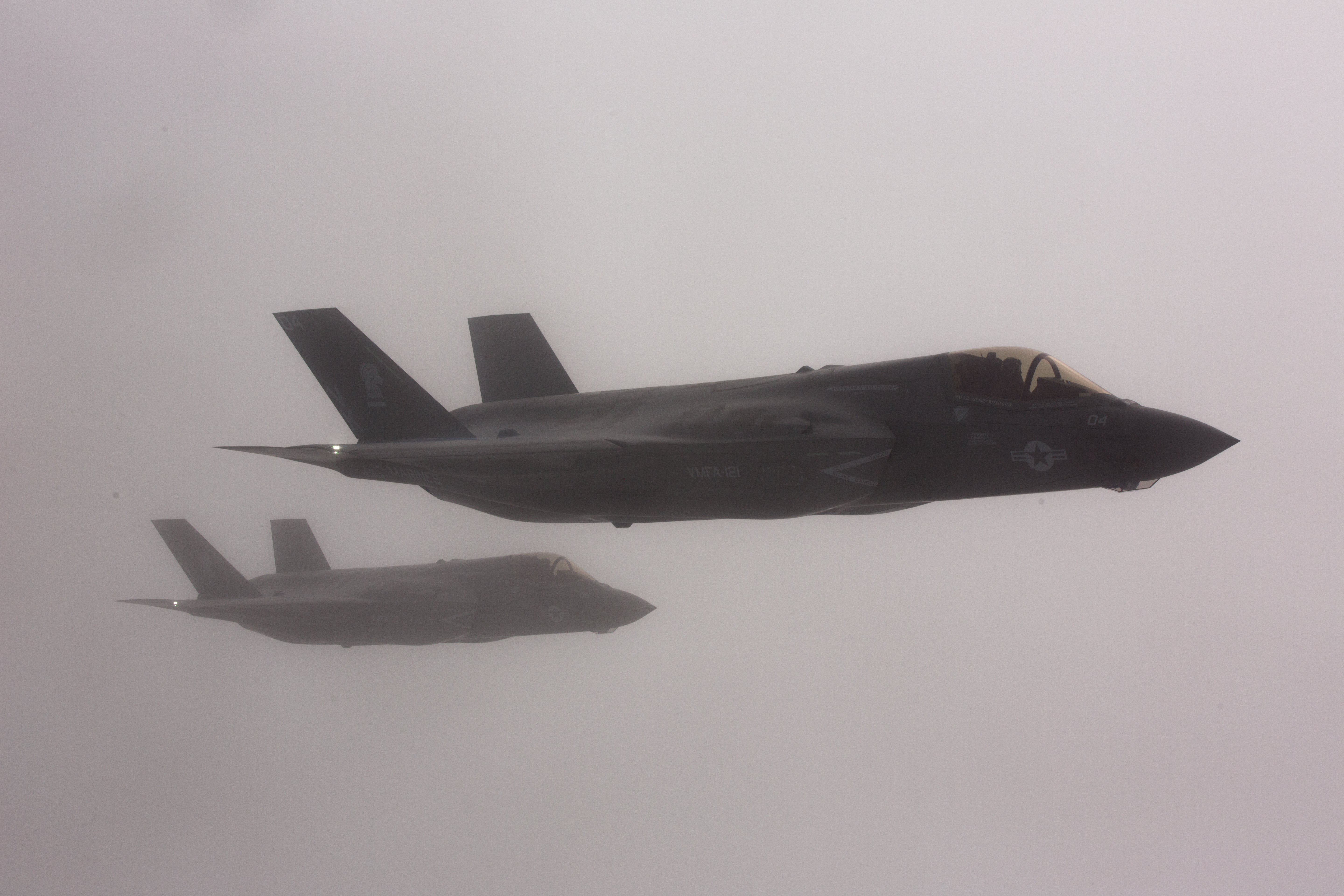
ARLINGTON, Va. — Lockheed Martin is working closely with the military services to keep new and old airplane types alike in good material condition, but a broken budgeting process and difficulty in fully funding spare parts have made that a challenge, the company’s vice president of sustainment operations said.Bruce Litchfield told USNI News on March 21 at Lockheed Martin’s annual media day that the company is working with the services and the Joint Strike Fighter Joint Program Office on “getting behind the power curve” on spare parts acquisition to avoid falling into the same readiness deficit that many other platforms have today.
Saying that F-35 stability is his business’s top priority today, Litchfield said that “the readiness business is hard. Sustainment readiness is not rocket science, but it takes an incredible effort, and you can’t ignore any aspects of it. And once you start to slope down, it’s a fast slope down and it’s a slow pull out of the problem area because parts take two to three years, depending on the complexity of the part, to go purchase. So if you didn’t buy them or you didn’t spare for them, you’re way behind. So what we’re, I think, doing in a way is raising the visibility of what we need, and now we have to work with the services, work with the JPO and work with Congress to make sure we adequately fund and provide for the spare parts that we need to sustain it.”
The Marine Corps has been particularly vocal about facing readiness challenges due to lack of spare parts. Deputy Commandant for Aviation Lt. Gen. Jon Davis told reporters last month that “not mission capable-supply” is the biggest challenge for every type/model/series in the Marine Corps, where spare parts are not available and therefore the plane cannot be fixed and put back on the flight line. Trying to catch up on parts procurement is a challenge for the older planes, where in some cases original manufacturers are no longer in business, and the Marine Corps is eager to avoid a spare parts deficit with its new F-35Bs as it builds the fleet out.
“Right now, the only thing I would say is we need to keep our procurement of spares on track,” Davis told USNI News in November 2015, after the first squadron of F-35Bs reached initial operational capability.
“If we don’t do that we could be in jeopardy. So that’s something we fight for all the time. The logistics part of this is not particularly sexy, but it is to me, it’s about making sure we have a platform we can sustain and generate the combat power we need.
Litchfield said Lockheed Martin is working with the JPO and the services to understand the proper level of sparing for each of the three variants, develop partnerships with aviation depots that will conduct repairs and modifications throughout the life of the airplane, and mature diagnostics and prognostics to ensure the health of the F-35 fleet is sustained.
But, he said, there’s only so much the company – or even the services – can do in this budget environment. Litchfield said the Defense Department is operating under a “broken budgeting process” today, and Davis and the other services’ aviation heads are forced to rely on Overseas Contingency Operations funding instead of the base budget to pay for spares.
“He’s being forced into a position to buy parts (in the OCO budget) because it’s not planned for, it’s not budgeted for, (in sufficient quantity) to make up for what the wartime commitment is,” Litchfield said.
“And if we’re a nation at war we ought to be operating like a nation at war.”
Asked if he was seeing enough money overall being put towards buying spare parts, Litchfield replied, “no. I think we have to adequately fund spare parts, and spare parts are typically not funded at 100 percent. And if you’re not funded at 100 percent, you’re playing a shell game and a chess game with the parts that you have available to optimize it. Could we have increased investments in that area? I think the answer is yes. However, I do recognize the fact that there’s going to be more requirements than dollars available, and so you’re going to have to make those decisions. So could there be more? Yes.”
Luckily, he said, the F-35 is showing high readiness levels in its early operations, which could help the services avoid falling into a readiness deficit with the planes. Litchfield said the Joint Strike Fighter went to the Air Force’s Red Flag exercise and performed with a 90-percent readiness rate, which “has got to give you great confidence in the aircraft.”
More impressive, he said, was the F-35’s performance while in the Avalon Air Show.
“Just a few days before that airshow, those two aircraft were at Luke Air Force Base. Flew to Hawaii, flew to Guam, flew to Australia, flew to the air show, was quick turn to fly during the air show – it hadn’t been supposed to do that, but did and did it exceptionally well – came back from Australia to Guam to Hickam and landed back at Luke, all on schedule with no hiccups. The reliability for what we’re seeing for the maturity of that aircraft is really well.”





